Plaster Restoration: Return your historic, decorative plaster to its original beauty
At the core of any historic building lies its original craftsmanship, and for Simcoe Hall at the University of Toronto, a landmark built in 1924, this craftsmanship is a testament to its legacy. After nearly a century of wear, construction, and maintenance, the building’s walls and columns had suffered damage, compromising their original beauty. Our team was brought in to perform a comprehensive historic plaster repair and restoration, focusing on replicating the original plasterwork to its former glory.
Plaster restoration is a specialized field that demands more than just a repair. It’s an art of plaster conservation and restoration. While other firms might shy away from the complexities of these projects, our expertise lies in creative problem-solving. We begin each project with a meticulous analysis to identify the best materials that match the original composition, colour, and texture. This ensures that our work is seamless and maintains the building’s historical integrity. The process involves more than simply patching; we go to the core of the problem, recreating the plaster substrates to ensure the restoration is both durable and authentic.
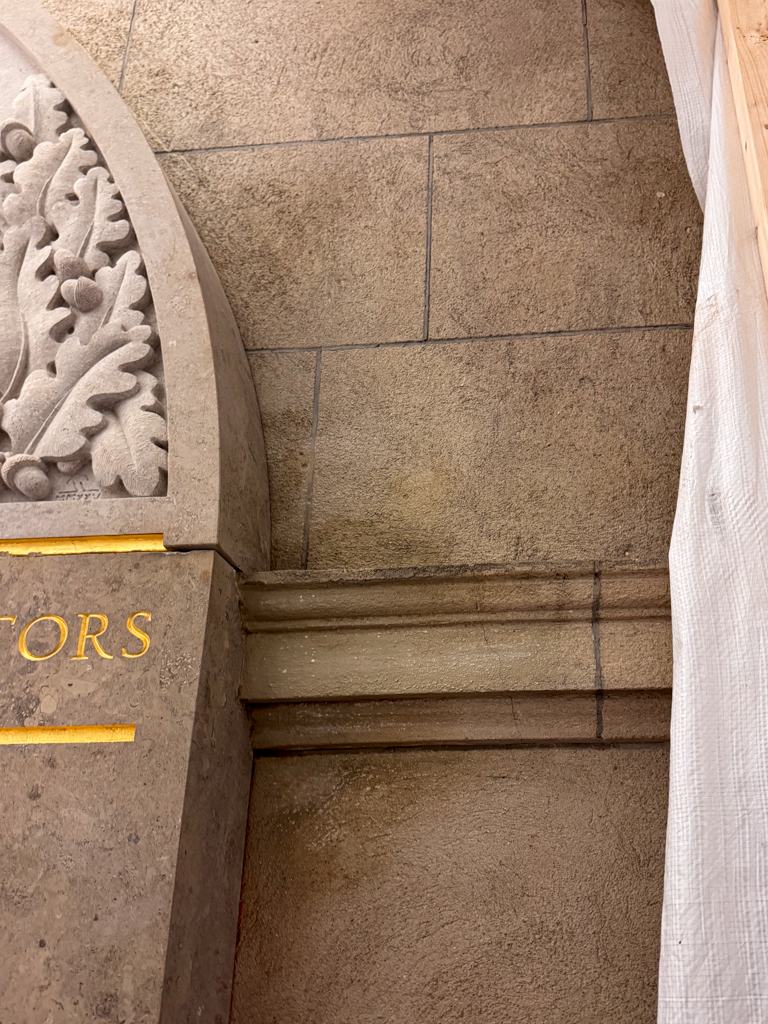
Historic plaster restoration of a damaged wall at the University of Toronto’s Simcoe Hall.
Speak To Shayan 416 (606) 8060 or Request A Quote
Our Plaster Restoration Process: From Analysis to Artistry
The process of historic plaster restoration isn’t a one-size-fits-all solution; it’s a careful, multi-step journey. Our approach combines meticulous investigation with expert craftsmanship to ensure every plaster restoration project, from the most minor plaster repair to large-scale historic plaster work, is a lasting success. While the specific details may vary, our process always follows these core principles.
These steps are crucial for historic plaster restoration, as using the wrong mix can lead to future cracking and degradation. We then source or create the right materials, adding specific additives to our lime plaster mix to replicate the original substrate’s properties. This attention to detail ensures that the restored plaster not only looks correct but performs exactly as the original. The lime plaster we use is also breathable, which is essential for preserving the building’s structure and preventing moisture damage. Lime plaster has been used for centuries to restore historic structures. It lets moisture and salts escape, protecting old walls from damage. This durable building material works well with raw brick, stone, and non-rusting lath. See why lime mortar is a traditional method of plastering walls on heritage buildings.
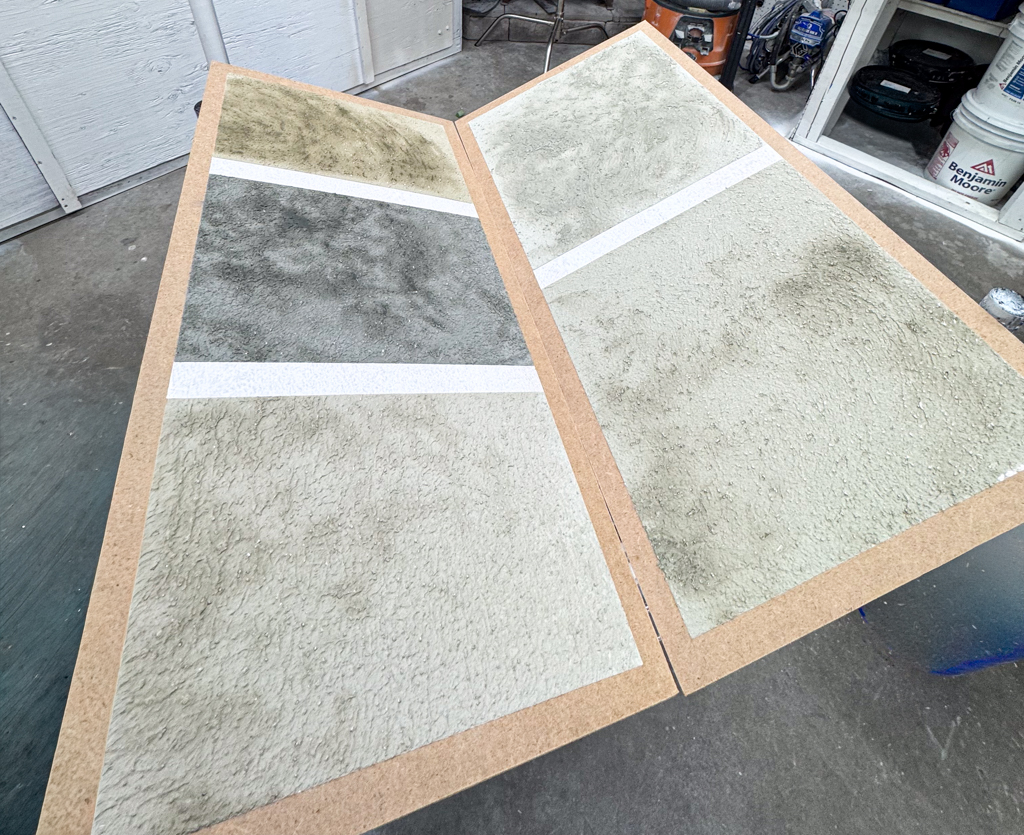
Samples created to match the original composition, colour, and texture of the plaster for the University of Toronto’s Simcoe Hall.

Before: Damaged Historic Plaster Wall at the University of Toronto
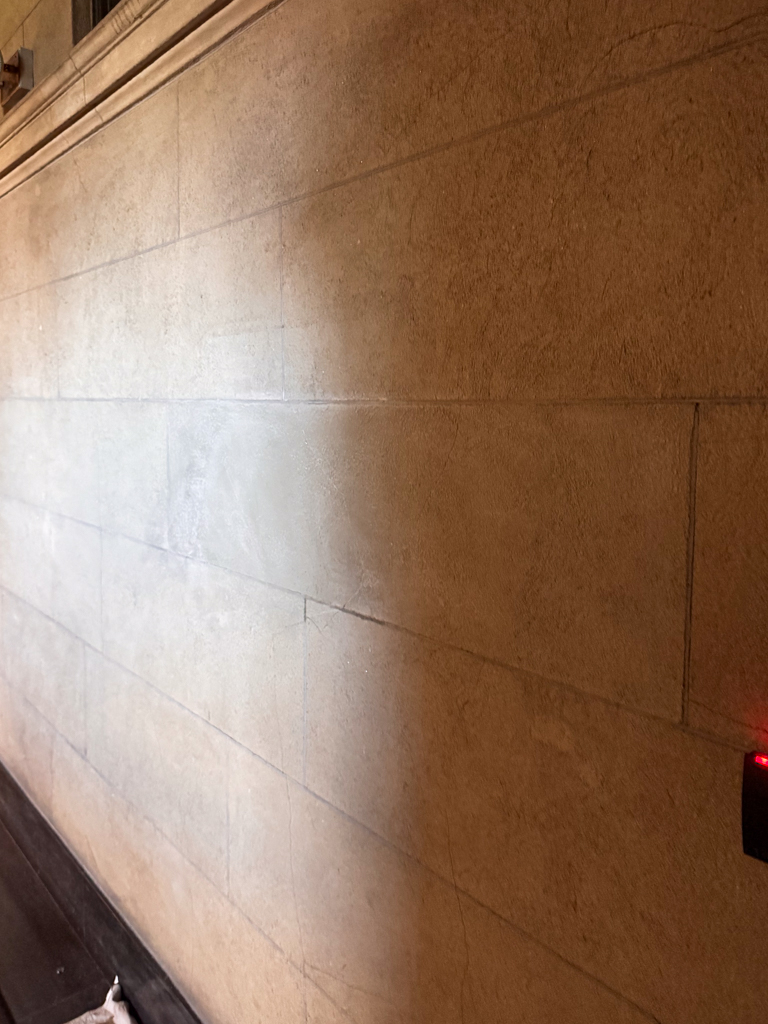
After: Flawless Historic Plaster Wall Repair and Restoration
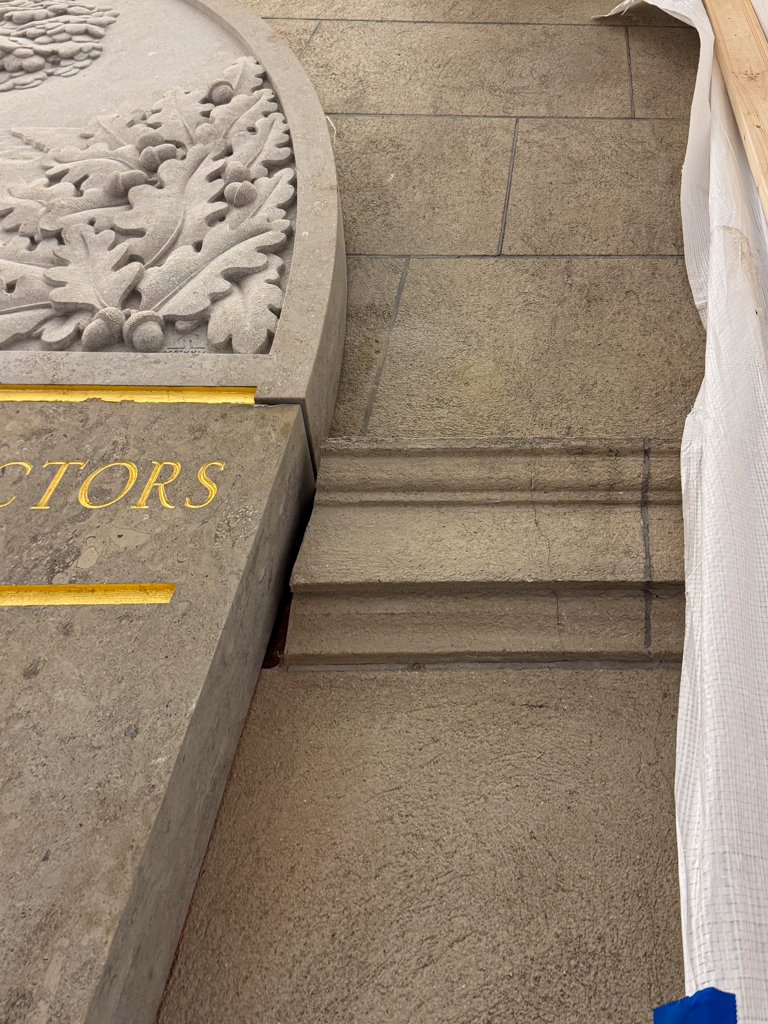
Before: Damaged Historic Plaster Wall at the University of Toronto

After: Flawless Historic Plaster Wall Repair and Restoration
The Cost of a Historic Plaster Restoration Project
Determining the exact cost of a historic plaster restoration project is a complex process. The price is influenced by several factors, including:
- The need for an initial plaster conditions survey.
- The overall size and complexity of the plaster work.
- The project’s location and required access (e.g., scaffolding).
- The cost of specialized materials, such as consolidants or custom-matched plasters.
Because each project is unique, it’s impossible to give a “typical” cost. The most accurate way to understand the investment required for your project is to contact us directly for a detailed consultation and quote.
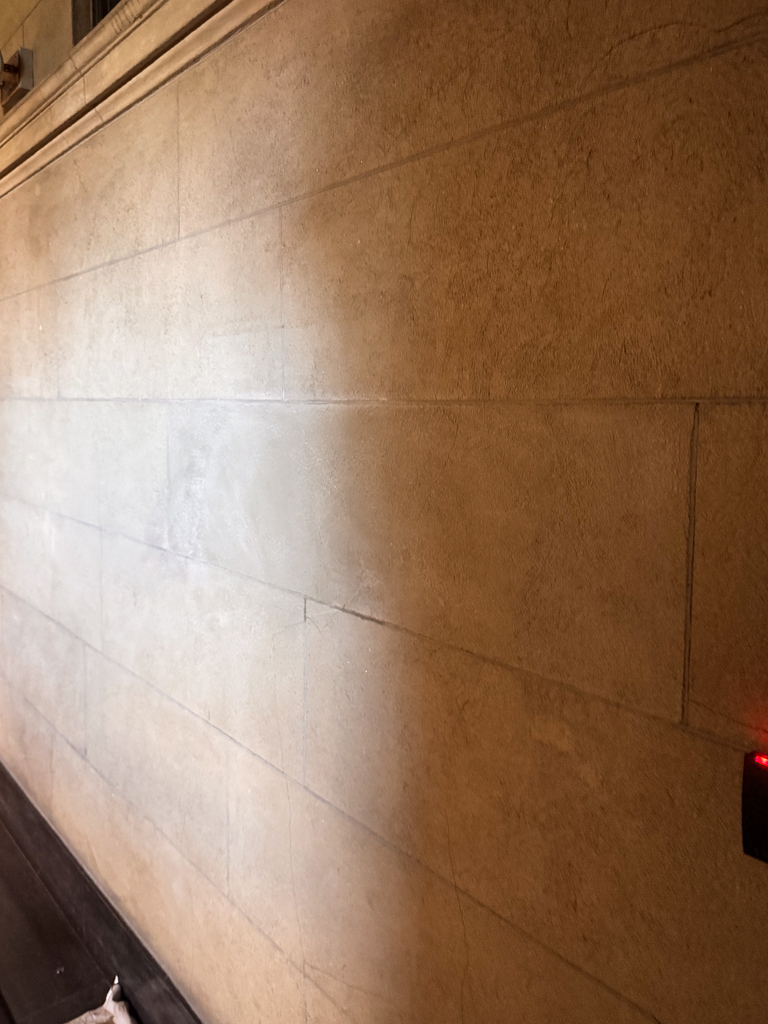
Our Historic Plaster Repair Services
In addition to historic plaster repair and restoration, our expertise includes a range of complementary services that support the preservation of historic and architectural landmarks. Our services are a testament to our commitment to comprehensive plaster work and include:
- Plaster Conditions Survey
- Historic Paint Analysis
- Conservation & Preservation Planning
- Historic Building Conditions Assessment
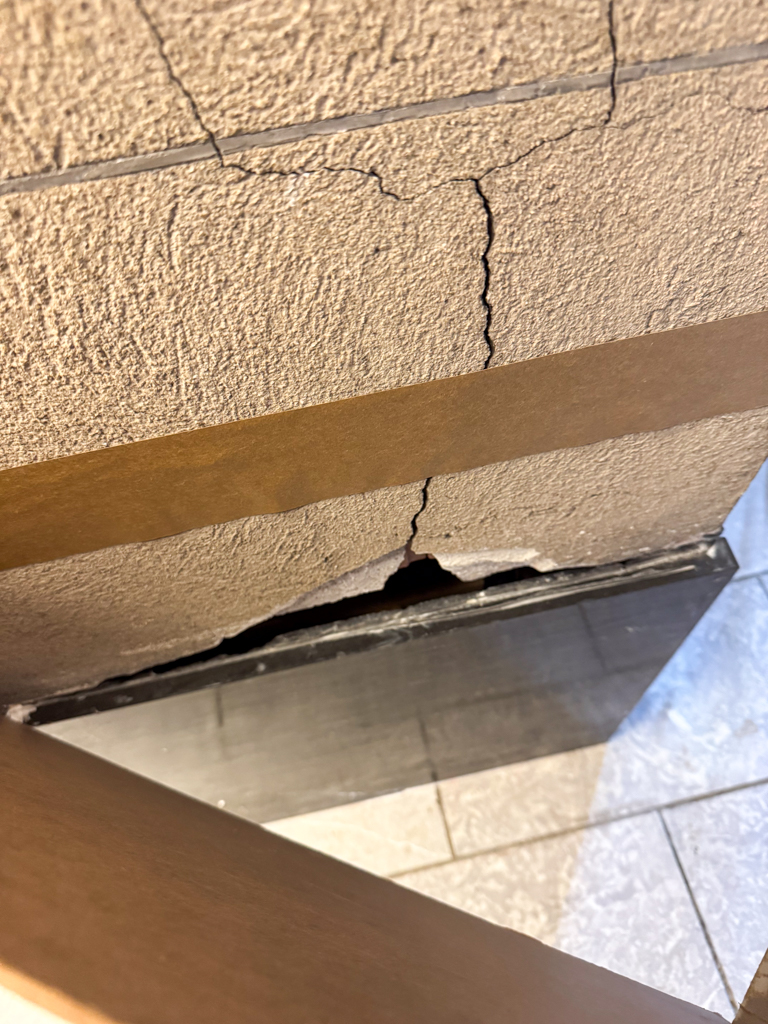
Before: Damaged Historic Plaster Column at the University of Toronto
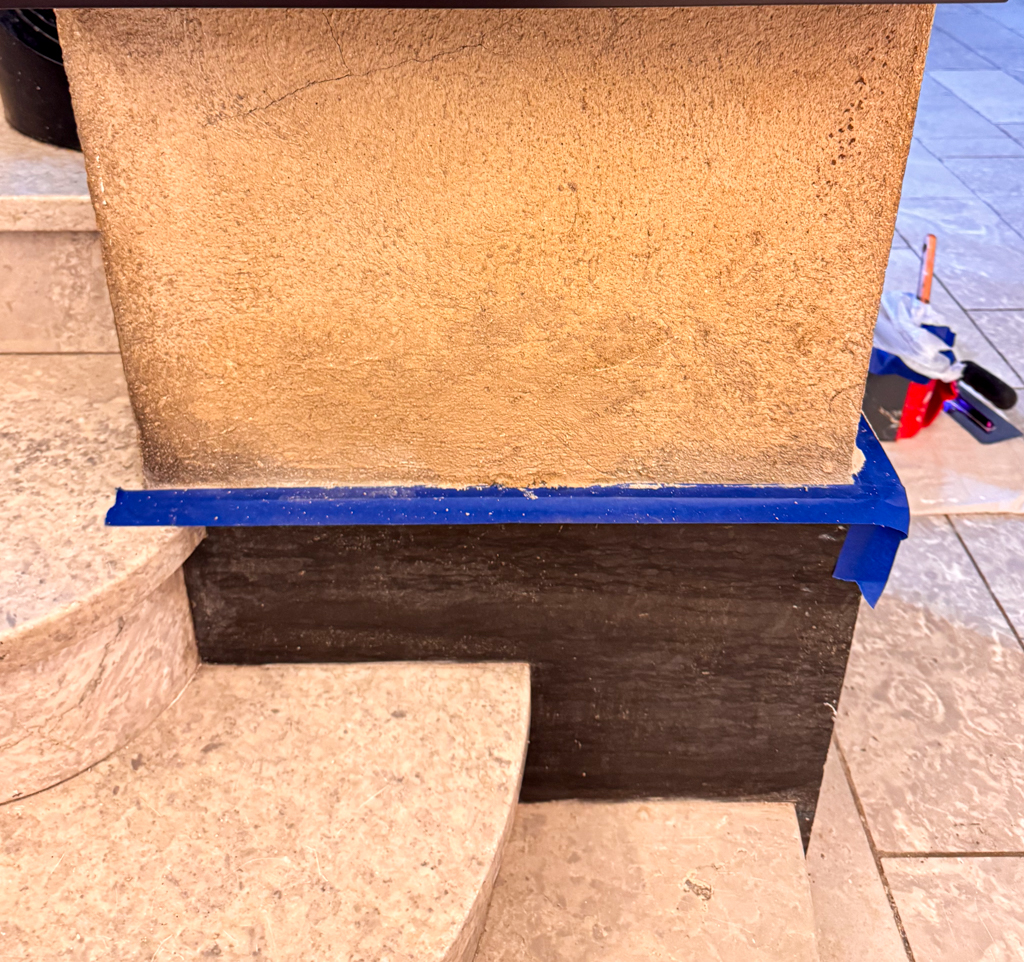
After: Flawless Historic Plaster Restoration

After: Flawless Historic Plaster Restoration
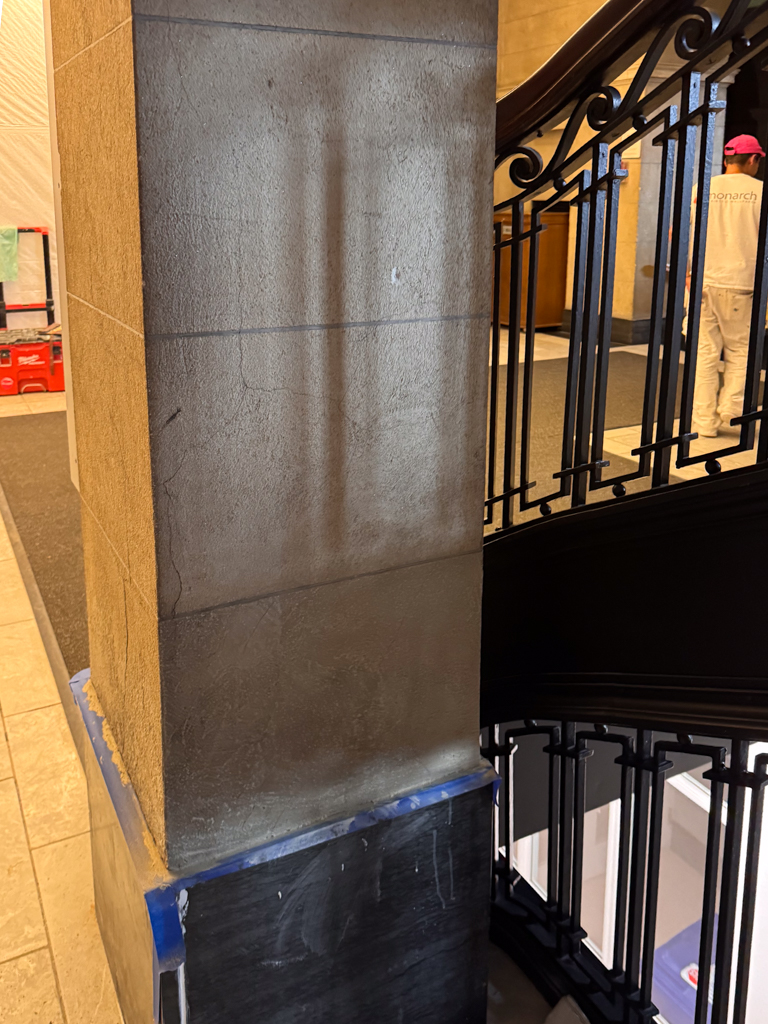
After: Flawless Historic Plaster Restoration
Frequently Asked Questions: Plaster Repair & Restoration
Ready to Restore Your Historic Property?
Your historic building deserves the best. If you’re planning a historic plaster restoration project for a landmark, heritage home, or institutional building, our team of certified artisans is here to help. We specialize in complex plaster repair and plaster conservation, bringing unparalleled expertise to every project, from Toronto to across North America.
Serving Toronto, Los Angeles, Florida and Texas
| Toronto & GTA | |
|---|---|
|
|
| Jacksonville | Tampa | Miami | Broward County | Palm Beach County |
|---|---|---|---|---|
|
|
|
|
|
| Los Angeles | Sacramento | Long Beach | Santa Monica | Mission Viejo |
|---|---|---|---|---|
|
|
|
|
|
| Dallas | Houston | Austin | San Antonio | Fort Worth |
|---|---|---|---|---|
|
|
|
|
|




